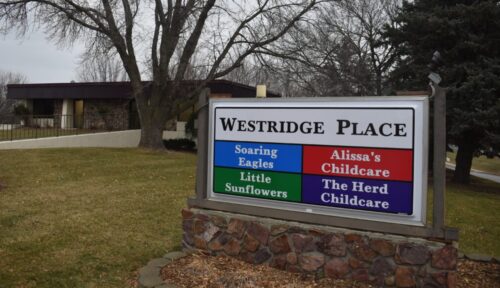A Few Solutions to the Childcare Problem in Rural America
The Survey of Rural Challenges Report, which covers 2015 to 2024, says a fast-growing concern is Childcare.
The shortage of childcare in rural areas has gone from a quiet concern to a full-blown crisis. Many people are driving long distances to drop off and pick up their children from daycare. Families who might consider moving to small towns are thinking twice, or not coming at all.
But here’s a creative solution we’re hearing more about: intergenerational care.

photo provided by Parkview Pointe www.parkviewpointeseniorliving.com
In Laverne, Oklahoma, a town of just 1,200 people, Lana Shaffer and her neighbors came together a few years ago to launch Parkview Pointe, a senior living community.
Just recently, they added Parkview Pals childcare right inside the same building. Now, seniors and toddlers share the space, are building relationships, and learning from each other every day.
It’s a win-win: better social interaction for both groups, and it’s making better use of the facility, like sharing the certified kitchen and some staff.
Diapers to Diplomas: School District Childcare
In Shickley, Nebraska (population 300), the local school district has played a key role in creating a child care center that ties in with their Pre-K program. In 2021, the Superintendent and Mom Sadie Coffey called it “Diapers to diplomas.” Learn more about how they started and funded it in this PBS story
Child care is an economic development need. In that same PBS story, you’ll learn how McCook, Nebraska, population 7,000, expanded child care by offering business incentives.

photo by Clay Schuldt from nujournal.com
Shared Facilities for Multiple Providers
New Ulm, Minnesota (population 14,000), used the pod model, where multiple licensed providers can operate out of a shared building. Heather Bregel told us the economic development authority she works for took the lead by finding, buying, and remodeling the building.
They have room for four different child care providers, and they offered less than market-rate rents as an incentive. Grants and donations covered less than 10% of the cost, so this is example of economic developers stepping up for their community.
Want to receive a free weekly newsletter all about small towns and rural challenges? Go to www.saveyour.town/signup
